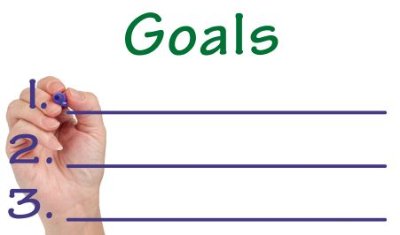What is it you want me to do?!!!!
I can’t tell you how many meetings I’ve sat through, my patience rapidly disintegrating into intense frustration, as I waited for the person who came to me with a specific goal, to never communicate it. Now, if I don’t know you well, I’m all for relationship building and bit of background, that’s part of the process. But, if we’re taking my time and yours with the implicit promise of a mutually beneficial outcome, then please tell me how I can help you. In other words…
Don’t hide your goal, pride it! It’s the quickest way to moving the process forwards towards a done deal.
Everyone in business has goals.
If you’re a salesperson your goal might be to persuade your customer to buy more products. A HR manager’s goal may be to get employees to embrace his company’s culture. A creative director may want to inspire creativity in her staff, a lawyer to persuade a jury to convict or acquit her client. A politician’s goal is to win votes, a comedian’s to win laughs, a nonprofit’s to win donors. In every case, your success rides on your ability to get your intention inside your listeners in a way that moves them to action.
It is your responsibility to explicitly direct your listener to your call to action.
If you walk into the room and you’re hiding your goal waiting to spring it an opportune moment, what your listener gets is that you’re hiding something. That hiding energy will make her suspicious and wary of everything you say from the outset. Or by “tap dancing” around your goal, you’ll leave your listener confused and angry at a potential waste of time.
The benefits of shining the light on your goal, “priding it,” are twofold.
First, this transparency creates clarity and engenders trust, making your listener open to your offering. And, secondly, it empowers your listener to pay your goal forward, evangelizing it to others so they, too, become your champions.
While there are many incredibly useful books on goal-setting, I’d like to offer a few tips on what is often absent in these books – goal-stating.
- The best time to state your goal is towards the beginning of your meeting. Why? Because if there is engagement, you still have time left in the meeting to work out logistics or deal points.
- Always test assumptions before stating your goal to make sure you’re on the same page with your listener. Why? Because this gives you insights to revise or reshape your goal based on responses from your listener. Always be willing to “drop the script!”
- Make sure the “what’s in it for them” is front and center. Why? Because all listeners are motivated by self-interest. It’s the quickest way to get their attention and intention.
- Involve your listener in the goal creation. Make it a dialog not a monolog. Why? Because he or she will be more invested in its realization and execution.


